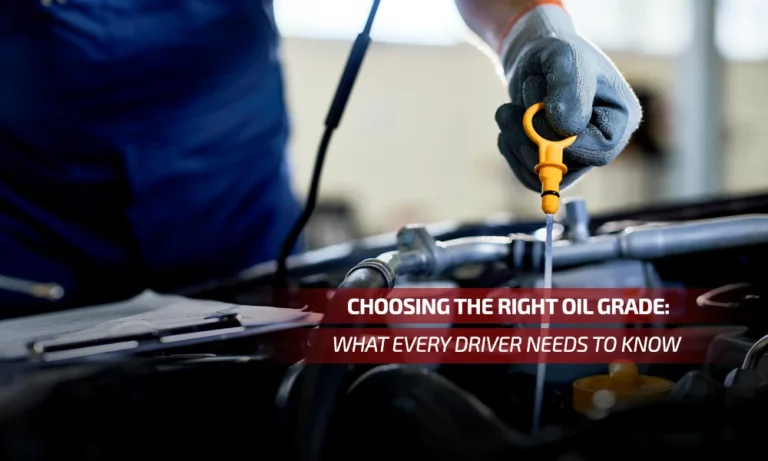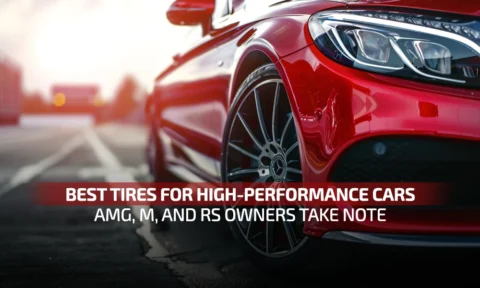Here’s a truth: most drivers don’t know their oil grade until after the car’s pushing a warning light.
Yet picking the wrong oil—too thick or too thin—is like wearing ski boots in the Sahara: uncomfortable, damaging, and pointless.
I’ve watched too many cars head for costly repair because the owner thought “any oil will do.” It won’t.
But you’re not a mechanic—and that’s okay.
This blog cuts through the jargon, shows you why oil grades matter (hint: it affects engine health and fuel economy), and tells you exactly how to choose for your ride.
Because your engine deserves better than guesswork.
1. Understanding Oil Grades: More Than Just Numbers
Seeing a label like 5W-30 probably confuses you—and that’s normal. But it’s simple:
- First number + “W” = oil flow at low temps (winter).
- Second number = viscosity when the engine is hot.
So, 5W-30 means it flows like a 5-weight oil in winter, and protects like a 30-weight when hot.
Modern oils use additives to deliver this all-season performance—it’s why one oil does the job year-round .
Why not always use thinner oil for better fuel economy?
Thin oils save petrol—but if you go below manufacturer spec, protection suffers.
A 5W-20 oil improves efficiency but may not protect an older engine designed for 10W-30.
Use the grade recommended for your car—nothing more, nothing less .
2. How Viscosity Index (VI) Affects Protection
Viscosity Index tells you how stable oil stays as temperatures change.
Higher VI (above 100) means less change in thickness—beneficial in hot climates.
Think of a motorbike in summer: oil needs to stay thick enough at high temps but thin enough when you start cold.
A high VI does that without sacrificing performance.
Does synthetic oil always mean better VI?
Generally, yes. Synthetics have higher VI and more additives, so they maintain performance over a wider temp range than conventional oils.
3. Type Matters: Synthetic, Blend, or Conventional?
- Conventional: cheapest, less protection, requires quick changes.
- Synthetic blend: middle ground—better protection at lower cost.
- Full synthetic: best protection, longer intervals, ideal for harsh conditions or sporty engines.
Pick a type based on your driving:
stop-start city? Synthetic blend’s fine.
Heavy towing or performance driving? Full synthetic all the way.
My car’s dealer recommends full synthetic—should I blind-buy it?
Not always. Use whatever meets the manufacturer’s SAE grade and API/ACEA spec.
If they recommend synthetic, use synthetic. If they specify conventional, don’t pay extra.
4. Choosing the Right Grade for Your Climate
Your choices for your car care should match local conditions:
| Climate | Cold start to hot cruise | Recommended oil |
| UK/EU average | 0°C morning to 90 °C engine heat | 5W-30 or 5W-40 |
| Hot climates | 30°C+ ambient high summer heat | 10W-40 or 15W-40 |
| Cold climates | -20 °C winter mornings | 0W-20, 0W-30 |
Even the engine manual gives a range for climates—you don’t have to pick the lowest number blindly.
5. When Older Engines Need a Heavier Weight
Engines over 150k miles may not seal as well.
A thicker oil like 10W-40 slows leaks and improves protection at operating temps.
Just don’t go higher than what the engine tolerates—check the manual first.
Wrapping It Up: Oil Grade Smarts in 3 Steps
- Step 1: Find your manual’s recommended SAE grade and API spec.
- Step 2: Match climate—hot climates = thicker end, cold = thinner.
- Step 3: Choose conventional, synthetic blend, or full synthetic based on driving style and budget.
Stick to this, and your engine will say thanks—with smoother runs, longer life, and better fuel picks.
FAQs
Can I mix oil grades during a top-up?
Yes—mixing a thin amount doesn’t harm your engine. Just ensure your overall oil meets manufacturer specs. Mixing 5W-30 and 10W-40 is okay, but don’t exceed the listed viscosity or spec limits.
Does using wrong oil void warranty?
It can. Manufacturers require oil that meets BOTH SAE viscosity and API/ACEA standards. Using something outside those specs may lead to denied warranty claims—always read the fine print.
How often should I really change oil?
If your car has an oil-life monitor, follow it. Otherwise, aim for every 10,000–15,000 km with full synthetic, or every 7,500 km with conventional or blend. Traffic, towing, and hot summers shorten that interval.
Is thicker oil better for high-mileage engines?
Sometimes. Older engines may benefit from 10W-40 or 15W-50 to reduce blow-by and leaks. Just keep it within your engine’s recommended range.
Can switching to lower viscosity improve fuel economy?
Yes—but only if it’s within spec. Using 5W-20 instead of 5W-30 can net a 1–3% MPG gain . But using too-thin oil risks wear—so don’t chase savings beyond your recommended grade.
Oil Grade Is More Than Just a Number
This isn’t about showing off—it’s about engine respect. Choosing the right oil grade isn’t optional.
It’s the basic step that keeps your engine running quietly, efficiently, and for the long haul.
So before your next oil change, check the manual, consider your weather, and pick the right oil.






